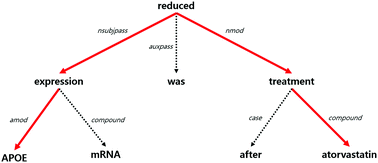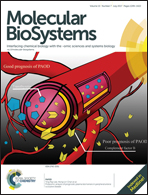Literature-based prediction of novel drug indications considering relationships between entities†
Abstract
There have been many attempts to identify and develop new uses for existing drugs, which is known as drug repositioning. Among these efforts, text mining is an effective means of discovering novel knowledge from a large amount of literature data. We identify a gene regulation by a drug and a phenotype based on the biomedical literature. Drugs or phenotypes can activate or inhibit gene regulation. We calculate the therapeutic possibility that a drug acts on a phenotype by means of these two types of regulation. We assume that a drug treats a phenotype if the genes regulated by the phenotype are inversely correlated with the genes regulated by the drug. Based on this hypothesis, we identify drug–phenotype associations with therapeutic possibility. To validate the drug–phenotype associations predicted by our method, we make an enrichment comparison with known drug–phenotype associations. We also identify candidate drugs for drug repositioning from novel associations and thus reveal that our method is a novel approach to drug repositioning.



 Please wait while we load your content...
Please wait while we load your content...